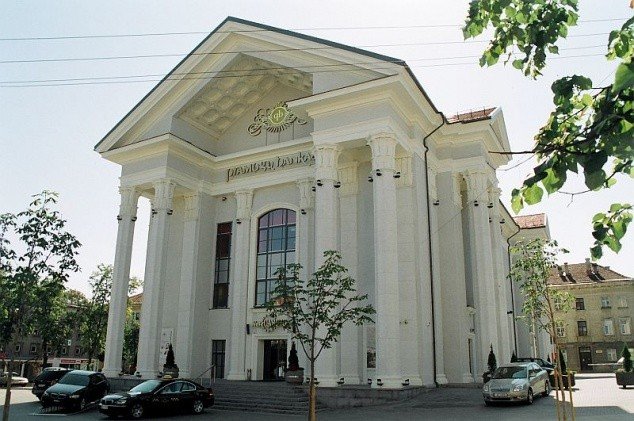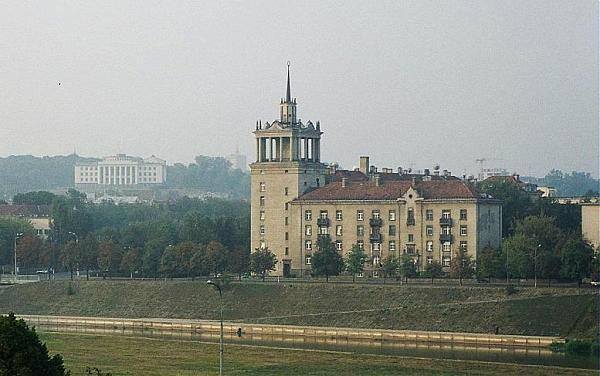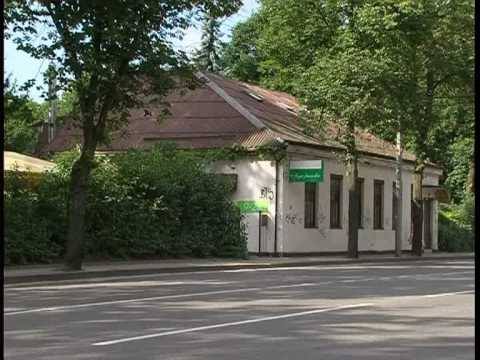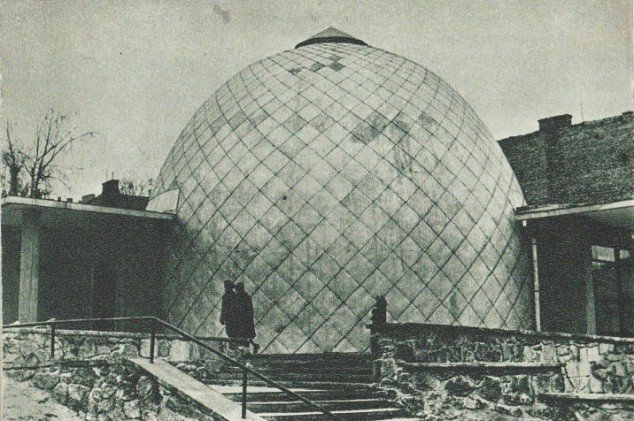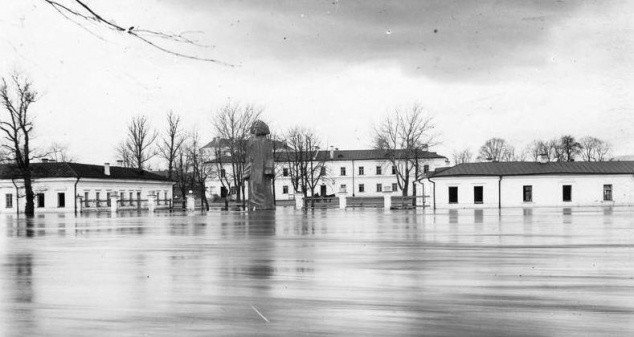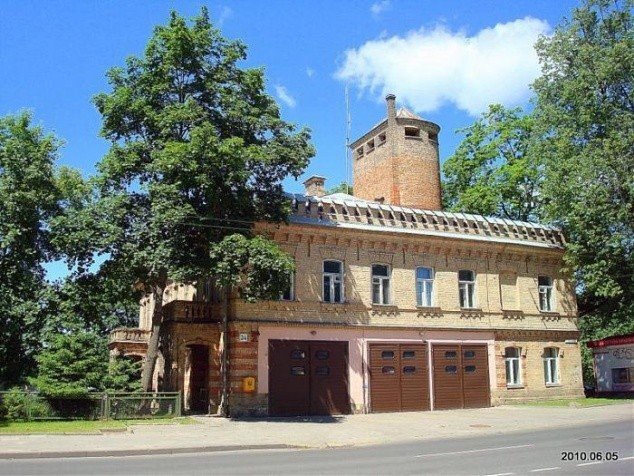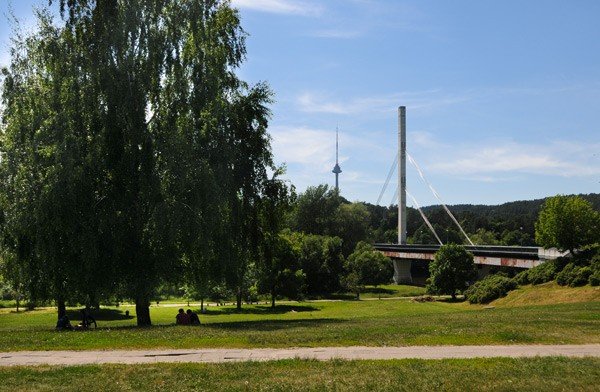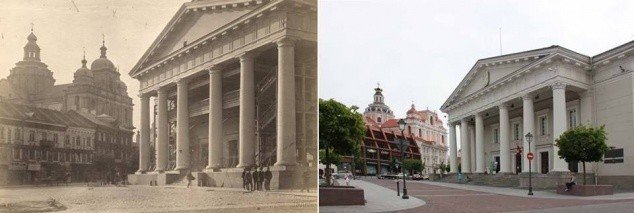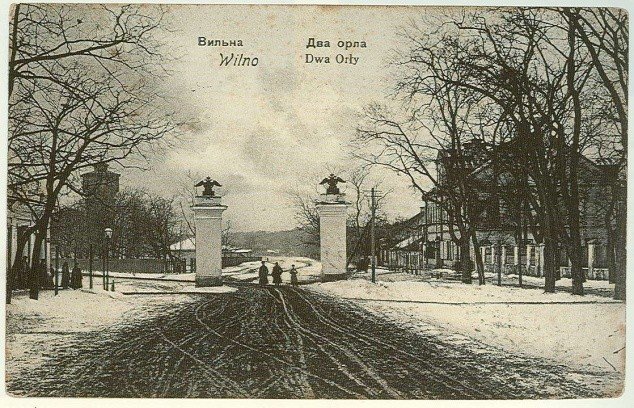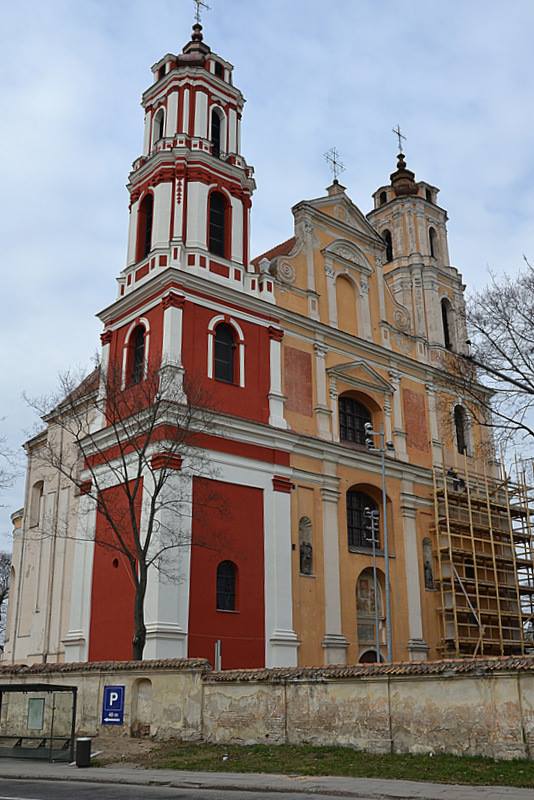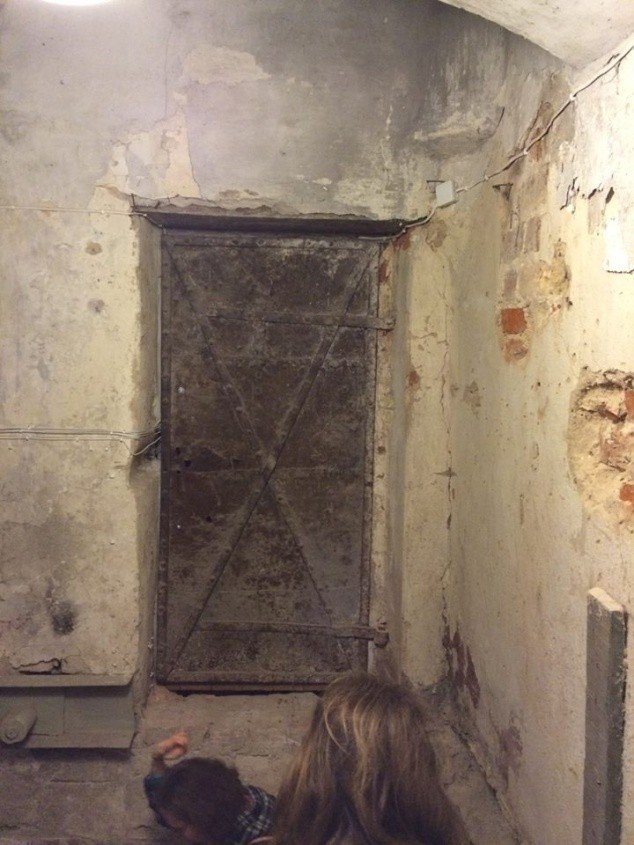The curiosities of Vilnius are collected by the author of the writer, book, or rather adventure guide to the history of Vilnius "My Vilnius mano" Justin Žilinskas.
1. Vilnius was cluttered by the Italian soviet!
You probably know that in Vilnius Italian architects got away. It's true, they were mostly around during the Renaissance. But - what is most interesting - even during the Soviet era, two buildings were designed by an architect of Italian origin. It's true - the Italian was fake, he was educated in the Soviet Union, etc. But the name is very Italian. Giovani Ripa Angioletto. He owns the current "Pramogų bankas" (intersection of Jakšto st. and Pamėnkalnis streets) and "Mokslininkų namai" (corner of A. Goštautos and JT Vaižgant streets). It is ironic, but currently the Soviet scientists' home is the "home" of right-wing politicians: the LR Liberal Sajūdis, the Institute of Democratic Politics, etc.
2. Do you want to go to the tavern?
No, not Rita (she is gone), no, not Marceliukė (because there is a granary), and no, not to Žemaičiai (because there restaurant), and to a real tavern that has been accompanying travelers from Vilnius for several hundred years? Well, well, they say it should be called bitter.
In this case, you need to travel to Antakalnio g. 12, cafe "Three pines". This is the historical part of the Antakalnis manor homestead. This tavern was especially famous in the XNUMXth and XNUMXth centuries, when it was called "Tivoli". It is true that only the walls remained from the previous barracks. Time is merciless. But still - delicious!
3. Where did the stars shine?
If you dive past the building of the abandoned "Lietuvos" cinema through the corridor between its two parts, climb the dilapidated steps (carefully!), you will come across a strange building with a dome. The dome is regular, scaled not like a dinosaur, it would be like a church, but there are no religious signs on it.
There shouldn't be any signs - here was the first planetarium in Vilnius, and that dome is an imitation of the sky, on which they projected the stars and told about them to the continuous stream of students. In the early 90s, the planetarium moved to new premises near St. Rapolo church ensemble. The Qpolo bar was located in the old premises. I wonder if they turn on the stars sometimes?
4. When you walk along Gediminas Avenue, you don't wonder why there is like a small square in front of "Kristianas": the line of old buildings is disintegrating? What happened here?
One of the most important emotional accents, which Poland justified the pig-headed seizure of Vilnius in the 1920s, was the "City of Mickiewicz". Therefore, the interwar period in Vilnius was marked by more than one attempt to build a monument to the poet - prophet who gave meaning to the path of life here. But the plans, as if under a spell, didn't work out - what can we say about nature's joke, when the Neris flood carried away the huge model of the poet's sculpture, which was standing on the other bank, near the current Sports Palace?
Still, the tests continued. And that small square was to become a part of Mickevičius square. This photo shows another model of the monument (wooden!), erected in this square for the citizens to view (1938), since the poet was called a prophet, this can also be seen from the poet's pose. But half a century still had to pass for the poet's sculpture to finally settle peacefully at St. Those. And - ironically - after all, it was forged by the hand of a Lithuanian sculptor (Gedimin Jokūbonis) and invited Lithuania to decide on a march to freedom in 1987. August 23
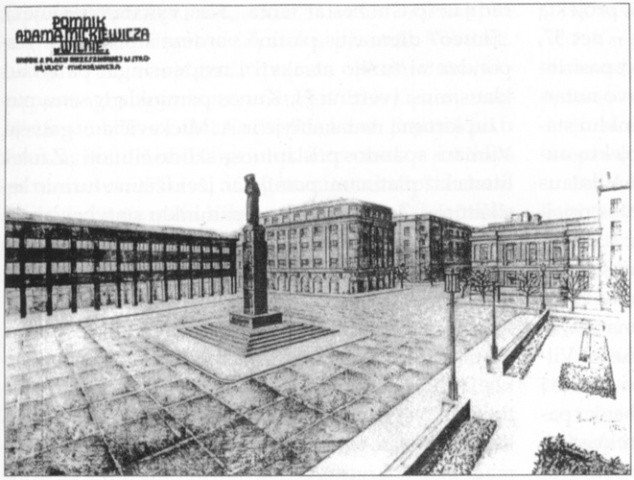
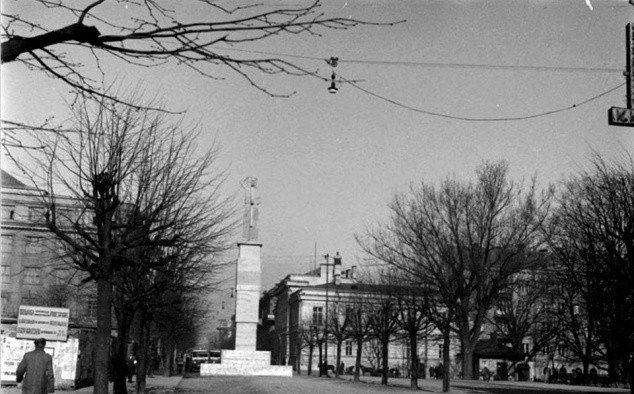
5. In the age of 112 and mobile phones, many people forget that not so long ago, the city was protected from fires that once caused terrible damage in a different way. Fire stations had towers and observers were on duty in them, and when they saw a fire, they would send firefighters. By the way, in Tsarist Russia, you got a pair of boots, a hat and a trench coat once a year for serving as a firefighter - not bad, isn't it?
One such fire station is still standing (and was used for its intended purpose until recently) near the ring of the Peter and Paul Church, Tado Kosciuška st. 34. In the pre-telephone times, the tower, now slightly overshadowed by trees, was used to look out - is there not an evil, decisive smoke coming from somewhere?
So keep an eye out when you pass by. And, when you see the "fire engine" running down the street, don't be too lazy to wish: "hurry up and wait!"
6. What connects Žvėryna and Riga? Bridges! What kind? Well, they are like from the jokes of the Soviet era! When after the construction of the Riga bridge across the Daugava (Vanšu tilts) there was a lot of metal cable left over, the manager of the Riga Bridge Construction Trust offered to donate them to the Soviet-era mayor of Vilnius (he was officially called the "Chairman of the Vilnius Executive Committee"). Those cables were used for the construction of the Žvėrynas suspension bridge. Those who participated in the big Sajūdis rallies should still remember how after the first of them the bridge swayed from an unprecedented number of people, and soon "jaliaraiščiai" (Sajūdis orderlies) began to regulate the flow of people. Because the feeling of walking on such a swinging bridge - wow, how unusual!
7. Vilnius University After the 400th anniversary of the Soviet occupation, it was called: "Vilnius Kapsukas State University of the Order of the Red Banner of Labor and Friendship of Peoples".
Vincas Kapsukas was such a Lithuanian Lenin - that is, in the XNUMXth century. the communist leader of the first half, who wanted to see Lithuania in the USSR during its formation. His parking lot was located in front of the Town Hall.
But there was another joke with Kapsuk's idols: in the same year of VU's 400th anniversary celebration, at the new VU buildings in Saulėtekis, right in front of the Faculty of Law, it was thought to place both parasites: Lenin and Kapsuk, chatting. However, Kapsukas and Lenin did not meet in Vilnius, especially in Saulėtekis, so the sculpture was called "Lenin and Vincas Kapsukas Poronine" (what they did in Poronine - I don't know, they probably planned a bright future). And they were of different heights, but they stood the same at VU - after all, the sculptor K. Bogdanas could not show the "leader of the proletariat of nations" shorter than a local henchman! True, the sculptural composition itself was not pompous enough - a not very high pedestal on a granite slab site - the place was suitable both for playing and for students to sit down, and in mid-June, blackberries ripened around it. After the restoration of Lithuania, both characters left for Grūtas (where they are now standing), and only a strange quadrangular mound remained near the Faculty of Law. The strawberries are still growing, I hope.
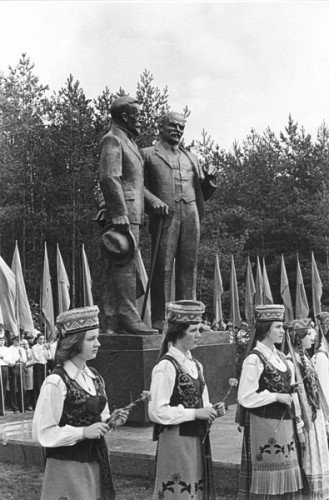
8. Everyone who writes about Vilnius mentions its silhouette, its horizon line formed by church towers and pinnacles. Vilnius is a city of Catholic churches, no one could argue with that. But the tsar's administration didn't like that view of Vilnius very much - the North-West region had to look orthodox! The churches were to dominate. But no matter how many churches were built, most of them did not have the strength to take over the image of the city - either the architects did not believe, or the spirit of the devil city interfered, but even St. The Spirit Monastery, after "correction" to make it look as Orthodox as possible (according to Maskolia's understanding), still did not look as it should. And then it was decided to turn the church into the patron saint of Lithuania, St. Casimir's Church. The iconostasis was painted by Dobužinski himself, the iconostasis even won an international award. The church towers are covered with onions, the ducal hat has disappeared without a trace...
Here it is - the North-West region, a cozy province of the vast empire, its "west", its forever Russian lands. It is not known how long a similar fate would have befallen other churches. But St. Kazimierz got his hat back only during the Second World War, so that it soon turned into the "Atheism Museum".
9. White pillars of Vilnius. A landmark that spoke of the development of the city, the symbolic gate of Vilnius, when the city wall no longer existed. It stood in several places: the most famous - near the house. Konarskis flower market (the guardhouse is still there - the customs office), less well-known - when driving down Liepkalnis street (the guardhouse can also be seen), also from the Antakalnis side. Tall, four-sided rectangles are parallel walls, on the top of which was Vytis, and in the days of the "North West Region" - a two-headed hen, that is, an "eagle".
So, the most famous ones are in Pohulianka, a little beyond St. Hyacinth chapels. Nearby is the place where Simon Konarskis was shot, so now the Konarskis stop and the Konarskis market are there, and the area in general is now called "Konarskio". People who used to live in Vilnius still call that place "near the pillars", even though the pillars themselves have not been there for several decades. Initiatives were heard to restore the pillars, if not both (which is impossible due to the current street), then at least one. It would be really nice.
10. It is hard not to notice how St. The towers of the Church of Jacob and Philip, standing behind Lukiški Square, near Neris. As is sometimes joked, Vilnius was lagging behind Kaunas in at least a few points: 1) There was no cable car in Vilnius (but there was one, it goes to Mount Gediminas); 2) There is no zoo in Vilnius (we will not make far-reaching political remarks about where it could be); 3) There is no carillon in Vilnius. What John, you might ask? Well, the kind that Kaunas has been famous for since ancient times - the bell musical instrument. But it didn't take long - back in 2013, news appeared that the Vilnius carillon was being installed in St. The towers of the Church of Jacob and Philip. Therefore, soon, when we come to Lukiškiau square, we will be able to enjoy the music of the bells. If only sooner, maybe even this summer?
11. It is probably a small secret that Vilnius is a watery area. The most rapid river - of course, Vilnius, it is said that it shapes the landscape of the city, and even destroys entire mountains (as happened with Mount Bekeš and the grave of Kaspar Bekeš on it). However, the current Vilnia riverbed is artificial - the old Vilnia flowed on the other side of the current Cathedral Square and flowed into the Neris at the Mindaugas bridge (by the way, that place has remained watery to this day - notice how the stone pavement is constantly rising near the Vrublevskii library. The soil there is very mobile).
In addition, the Vilnia stream ran through the current Bernardina garden and the current Barboras Radvilaitė street. So the Vilnius furrow, as we have it now, only dates back to the XNUMXth century. derivative. There would be more streams in Vilnius - first of all, the Vingriau (Kačerga) stream, flowing from Vingriau springs. It was very watery Antakalnis, even the boundaries of dominions ran along the streams there. Under the current Kareivių street (Žirmūnai) is also a plugged stream. And the so-called "bison trail", which led from Saulėtekis VU buildings to Antakalnis by trolleybus, had its own stream. And there is also the Baltupių stream, called Kalvarijų Cedron, a stream on the slopes of Žvēryn... Sometimes it is a pity that the streams are not preserved in the city center, stuck in pipes and sewer collectors - you can imagine how fun it would be - Vilnius with canals! By the way, it is said that it is the Vingriau stream that destroys the fence of the Presidency, because it flows under it - you can't argue with nature!
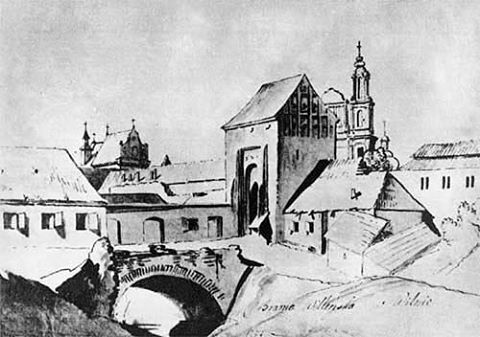
12. Only for women. No, this will not be a message about how women used to dress up in Vilnius. It's just that this door was intended only for women - through it, nuns of the Poor Clares order came to the balcony of the Bernardine Church to listen to mass. The men used to pray downstairs.
Source: My Vilnius is mine

